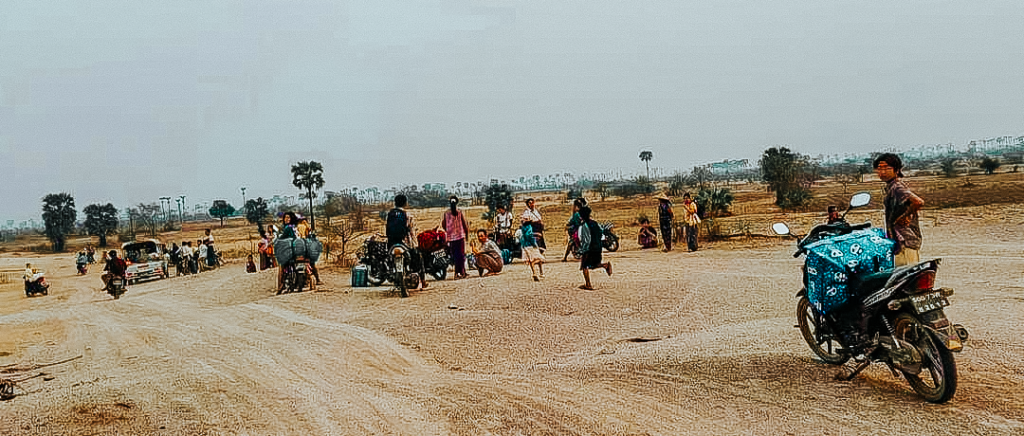Myanmar Spring Chronicle – December 23 Viewpoint
MoeMaKa, December 24, 2024
Southern King Can’t Save the Northern King: The Plight of War Refugees
According to a report released on December 2, 2024, by the United Nations High Commissioner for Refugees (UNHCR), Myanmar now has over 4 million internally displaced people (IDPs) due to conflict. This figure has increased nearly eight to ninefold in less than four years since the military coup. These numbers exclude refugees displaced abroad by war and ethnic cleansing. For instance, the Rohingya refugees who have been living in Cox’s Bazar, Bangladesh, for seven years and those in longstanding refugee camps along the Thai border, established in the 1990s, are not included.
When accounting for refugees in neighboring countries, the total number likely exceeds 5 million. Although not as high as the 14 million war refugees in Syria—the highest in the world—Myanmar now ranks second in terms of displaced populations. Before the military coup in February 2021, there were nearly 370,000 IDPs primarily in Kachin State, northern Shan State, and Rakhine State, regions that experienced intense fighting from 2018 to 2019.
After the coup, resistance movements, military counteroffensives, house burnings, village destructions, and combat-related deaths escalated displacement, driving numbers from the hundreds of thousands to millions. Regions like Sagaing, Magway, Chin, Karen, Kayah, northern and southern Shan, Kachin, and Rakhine states have seen soaring numbers of IDPs, exceeding 4 million by December 2024. This means roughly one in every 13 people in Myanmar is a war refugee.
Before the coup, IDPs in some camps could live in relatively stable conditions despite a lack of adequate shelter or amenities. For example, in northern Shan State’s Kutkai, Namkham, and Namphatka regions, families of 4-10 people lived in cramped shelters, with some camps even having electricity and access to drinking water.
While international organizations provided some assistance, the scale of aid has significantly dwindled due to logistical and security challenges. Furthermore, humanitarian organizations face restrictions, and international support often prioritizes crises in Ukraine and Gaza over Myanmar, leaving its refugees neglected.
Lives of Struggle and Sacrifice
In regions like Shan, Sagaing, Magway, Chin, Kachin, and Rakhine states, IDPs survive by rationing their resources and relying on mutual support. Many international governments focus more on other global crises, leaving Myanmar’s issue marginalized.
Displacement not only causes physical harm but also inflicts psychological trauma. Refugees frequently experience recurring nightmares, stemming from losing homes to fires, family members to violence, and all personal belongings to war. Children and adults endure prolonged hardships in camps, reflecting a deep sense of loss and despair.
Urban areas also witness atrocities during offensives, with reports of homes being looted during raids. These events highlight the lawlessness, poverty, and moral degradation prevalent in Myanmar’s fractured society.
The Role of Armed Groups
While armed groups fight for the people’s freedom and national identity, they must also prioritize minimizing harm to civilians. Planning military campaigns without considering the collateral damage to ordinary citizens only exacerbates displacement. Victory in warfare should not come at the expense of civilian safety and well-being.
The current crisis mirrors the moral dilemmas posed in stories like the Mahosadha Jataka, questioning who truly upholds justice and compassion amid such trials. It serves as a grim reflection of the sacrifices borne by both combatants and non-combatants in Myanmar’s ongoing conflict.

